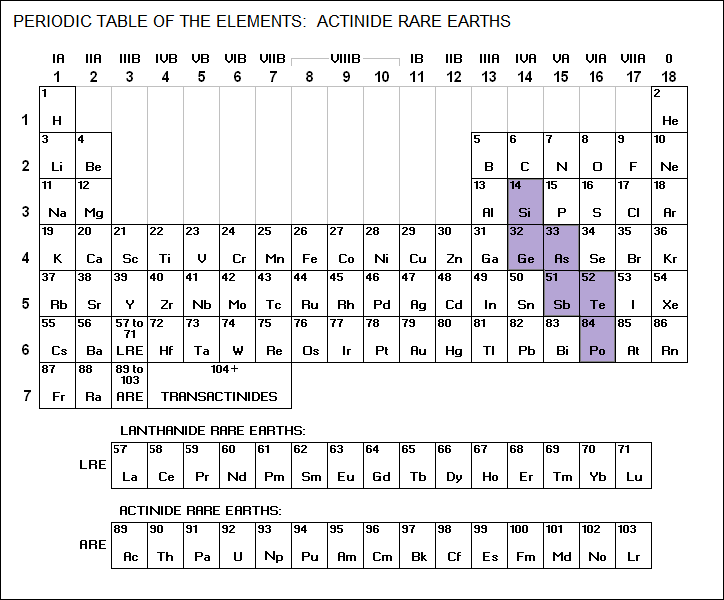
* Silicon is a member of the semi-metals family:

____________________________________________________________________
SILICON / Si / 14
A blue-gray, shiny, hard, brittle element when in its pure
crystalline state; it has high resistance to corrosion. Three
isotopes are found in nature:
Si<28/14> / 92%
Si<29/14> / 5%
Si<30/14> / 3%
All are stable.
atomic weight: 28.0855
abundance: 2nd
density: 2.33 gm/cc
melting point: 1,410 C
boiling point: 2,355 C
valence: 4
____________________________________________________________________
Silicon is a vital element, with production in the millions of tonnes per year. Ordinary sand, composed of silica (SiO2), is the most common feedstock, with the silicon extracted by heating it with coke. Of course sand in itself is heavily used by the construction industry. Sand is the major precursor of ordinary glasses.
Silicon is used as an alloying element, and of course pure silicon crystals are the basis for the modern microelectronic industry. The silicon generally has to be very pure and "monocrystalline", consisting of a single crystal. A monocrystalline ingot is obtained by dipping a "seed" crystal into a hot melt of purified silicon and then slowly withdrawing it. The ingot is then further purified by "zone refining" -- running an intense radio-energy field up the ingot, melting it in a relatively thin layer as the field moves up the ingot, with the layer carrying impurities with it. Once the ingot is purified, it is sawn into wafers, which are then polished and sent on for microelectronic fabrication.
Quartz crystals, made of pure silicon dioxide, are also heavily used in electronics as filter elements. Silicones -- polymers made up of alternating silicon and oxygen atoms, linked in chains or rings -- are used in rubbers that provide waterproofing or resistance to chemical attack. They became infamous after being used as fillings of breast implants, with health problems blamed on leaking silicon, despite the fact that no hard evidence was ever found to establish a health hazard.
Silicon carbide (SiC) or "carborundum" is almost as hard as diamond and is used in abrasives. Sodium silicate (there are several forms) is used in detergents, textile bleaching, and improving the recovery of petroleum from oil wells. Silicon is the primary component of a number of precious stones, including topaz, garnet, and the "phony diamonds" called zircons.
